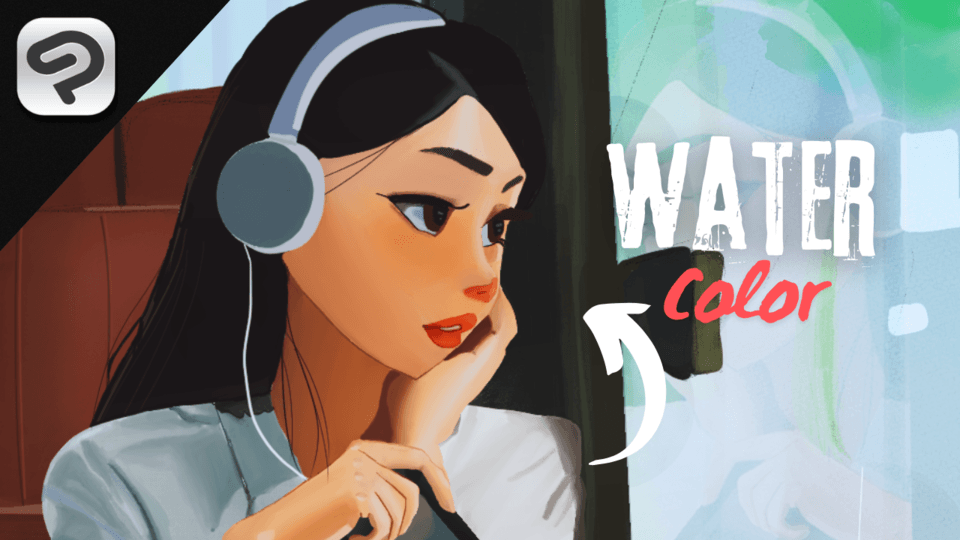FILTERS in Clip Studio Paint 3.0
Hello, I'm Roxana and today I will be testing the Clip Studio Paint filters.
This wonderful tool can help us beautify or fix our works, as long as we know how to use it, we have the patience to try them and experiment with them and we don't forget to always have the layer we are editing duplicated.
That's right, our friends, filters usually affect the layer we have selected, neither the layer above nor the one below, just that one.
Therefore, it is necessary to have our illustration or the part that we want to modify on a single separate layer, specifically for the filter that we are going to use, that way if later we want to change or delete something we will always have our backup layer.
Line corrector
We can increase or decrease the thickness of our outline. We choose the number to know how much we want to increase or decrease the thickness of the line and it changes the thickness of the line of the entire image.
It doesn't matter if it's black and white or a backgroundless outline.
Unfortunately, it doesn't work with color images, so keep this in mind when using it.
Blur
We can use it to give more movement or dynamism to the character, to give prominence to our main character in the illustration, or to downplay the background of our illustration.
Motion blur
Create a movement effect throughout our layer, the direction of the effect will depend on the settings we give to the filter.
We can join it with a couple of lines to give more movement to the character and delete the part of the face or close to the face so that we continue to have a defined focus.
Gaussian blur
It will give us a diffuse effect throughout the image.
It is ideal for static images where we want to downplay the background or highlight a main object.
Rotation Blur
It is also perfect for giving movement to our illustrations.
We can play with the angle, shape and intensity, to achieve the desired result.
Radial blur
It is ideal to highlight something and give it prominence
Distort
It serves to change the lens of how we see the illustration
Convert to panoramic
It can help us make an illustration seen from a camera and play with perspective.
Polar coordinates
It gives us a more interesting effect, as if we were folding the illustration into a cone.
Geometric distortion
It allows us to play with the corners of our illustration
Shrink
It is something similar to Geometric Distortion but it starts from the center and does not necessarily cover the corners.
fisheye lens
It is similar to the panorama but I find it more customizable, choose the one that best suits your needs.
Waves
It is quite customizable and interesting, the effect it gives depends on the shape we choose.
Circular waves
It starts from the center and I love the distortion effect that makes it look like a drop of water has fallen on the illustration.
Swirl
The direction of this effect depends on the spin.
curved surface
We have the option of cylinder or sphere, to give shape to the effect.
Zigzag
It is a slightly more aggressive wave effect.
Effect
Chromatic aberration
Separates the red, green and blue color channels and shifts them.
Pencil drawing
It allows us to give a more traditional effect.
Noise
It allows us to give a little more texture to our illustration.
Mosaic
It allows us to pixelate our image or censor it
Vintage movie
It has several finishes, but this was my favorite.
Painter
It allows us to make the lines and colors in the illustration more noticeable, separating or highlighting them according to our configuration.
Normals map
It is used for textures in 3D modeling.
Well, that's it for this filter test, I hope it helps you with your projects. It is a pleasure to share this with you.













Comment